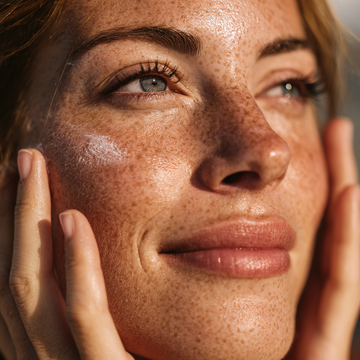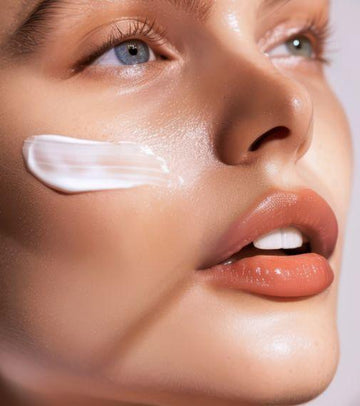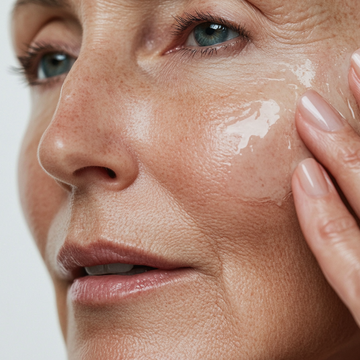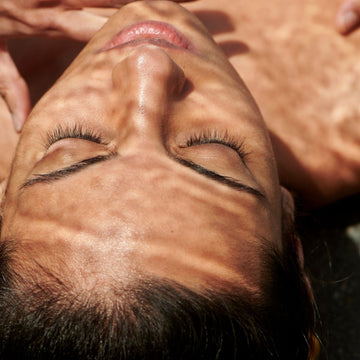Do you know what the SPF number actually means on sunscreen? Or that there is not much difference between SPF 30 and SPF 50 protection? It does matter which sunscreen you choose, as not all sunscreen products provide skin-friendly protection or offer protection against both UVA and UVB radiation. There are super active ingredients that enhance the effectiveness of sunscreens while also regenerating and nourishing skin cells.
The Sun Protection Factor, or SPF number, indicates how well the given sunscreen can protect the skin from UV radiation, meaning how long it provides protection for the skin. However, not all skin tolerates the same intensity of sunlight in the same way, as more sensitive skin burns more quickly than normal or olive skin that is prone to tanning. Therefore, it is recommended to reapply sunscreen multiple times during hours spent in the sun.
The SPF number of sunscreen, or the UV factor
The higher an SPF number, the greater the protection it offers, meaning it provides protection from sunscreen for about the same amount of time. This is particularly important information for people with light skin, as normal or tanning-prone skin is much more tolerant; a sunscreen with SPF 20 can protect it for much longer, and it will not burn or redden at all. A sunscreen with SPF 20 or 30 filters out about 97% of UVB radiation, while an SPF 50 sunscreen filters out 99% of UVB radiation. Therefore, it is clear that there is not a significant, only 2% difference between the two SPF numbers.
It is important to know, however, that not all sunscreen ingredients protect against both UVB and UVA radiation.
What do UVA, UVB, and UVC rays cause on the skin?
Ultraviolet rays, also known as UV radiation, are a type of energy coming from the Sun. UVC rays have the shortest wavelength and are actually insignificant, as they do not reach the Earth directly.
Relatively little is heard about UVA radiation, yet it is the most important to protect against, as these are the longest rays that penetrate the skin the deepest and cause serious changes there. UVA radiation is primarily responsible for the development of skin cancer, in addition to significantly contributing to the skin's aging processes and extensive wrinkling. UVA rays reach the bottom layer of the skin, the subcutaneous tissue, while UVB rays penetrate the epidermis and dermis.
UVB rays burn the skin, leading to sunburn and later to peeling of the sunburned skin. Both UVB and UVA rays damage the skin and skin cells. Therefore, it is very important to choose a broad-spectrum sunscreen that provides safe protection against both types of radiation, and to protect your skin as much as possible!
It is very fashionable nowadays to recommend the use of sunscreen facial cream everywhere and all the time. It is indeed important for the facial skin to always be protected since it is the area we can cover the least. However, the importance of sun protection is significant only when the skin is exposed to continuous sunlight for extended periods. In everyday life, it is completely unnecessary to use sunscreen with a factor of 30 or higher, if we are just going to work and sitting in the office during the day or taking care of our affairs in the city. Unfortunately, most sunscreens stick to the skin or dry it out, making them neither comfortable to wear nor nourishing for the skin, and their thick texture can lead to sweating underneath. The strength of sun protection is not equal to thick, greasy sunscreen effects!
Sunscreen for the face - Protection, care, and skin tone evening in one product
A light-textured sunscreen cream for the face with safe UVA and UVB protection, enriched with cell-protective and skin-nourishing active ingredients, is a perfect choice for everyday urban sun protection. There are key ingredients in a sunscreen that not only strengthen its protective effect but also nourish, care for, and regenerate the skin, or immediately repair damaged skin cells. It is important to choose a cream with physical sunscreen, as it is skin-friendly and does not absorb into the skin. It protects by reflecting the UV rays caused by sunlight. Choose a dermatologically tested product that contains antioxidant components and regenerative active ingredients.
The L'AMIA NATURA BB sunscreen creams for the face:
- Contain skin-friendly physical sunscreen that provides protection against UVA and UVB rays
- The lingonberry stem cell regenerates sun-damaged skin, inhibits skin aging, and improves the function of defective cells
- Their antioxidant components reduce inflammation, are powerful cell protectors, effective anti-aging agents, and protect the skin from free radicals
- Optimize skin hydration, regenerate skin structure
- Dermatologically tested - hydrate the skin, do not stick, absorb into the skin, leaving a pleasant skin feel
- Overlap more skin shades, providing an even, beautiful complexion







